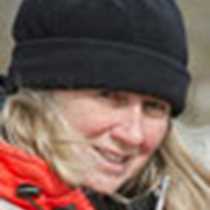Nightingale Island, Tristan da Cunha
Unpleasantness sometimes hits one smack in the face. It was there in the air, the odour of diesel fuel. Oil floated on the sea making iridescent patterns. Goosebumps crept up our arms in spite of warm and pleasant temperatures. Nightingale Island seemed so far from anywhere and yet here it sat despoiled by the hulk of a freighter broken against its shores. Penguins, painted black with oil shivered on rocky ledges. Subantarctic fur seal pups whined from shoals, their fur standing in spikes as if smothered in lard.
And it was here too that we discovered what a little wildness can do. Away from the scene at the edges, where ocean and land came together, we disappeared into a fairyland smothered in green vegetation and bursting with life. For hours we were absorbed in the newness of this place. Tussock grass embraced us, the blades taller than our heads. Tristan thrushes and Nightingale buntings twittered from the recesses in between and shearwaters moaned from burrows beneath. Smack in the middle of the trail, tall pedestal-like nests were occupied by yellow-nosed albatross chicks in various stages of downy dress. Higher and higher we climbed into the island tree (Phylica arborea) forest, its fragrant leaves and blossoms urging us to stay but curiosity carrying us further to an improbable world in the crater of the volcano. Rushes and sedges and strange tree-like bog ferns (Blechnum palmiforme) thrived in the soggy soil. Everywhere, were albatross nests. However did these amazing birds with wings best suited for gliding, ever find space to become airborne? It was such a world of plenty that we ignored the carpet of prion wings that paved the floor of the trail that we walked upon simply accepting their presence as a sign that the skuas were well fed.
Back at the shoreline local conservation officers were busy rounding up oiled northern rockhopper penguins for transport and cleaning. Nightingale Island, part of the Tristan da Cunha archipelago is an important breeding site for this unusual bird, now imperiled by the wreck of the MS Oliva less than a week ago. Fortunately many birds were moulting and not venturing to the sea while most of the fledglings had already fled.
Back at sea, once again it was easy to escape into our own little world where calm seas and warm temperatures invited all to sit on the decks and stare far off pondering the inconsistencies of life.




